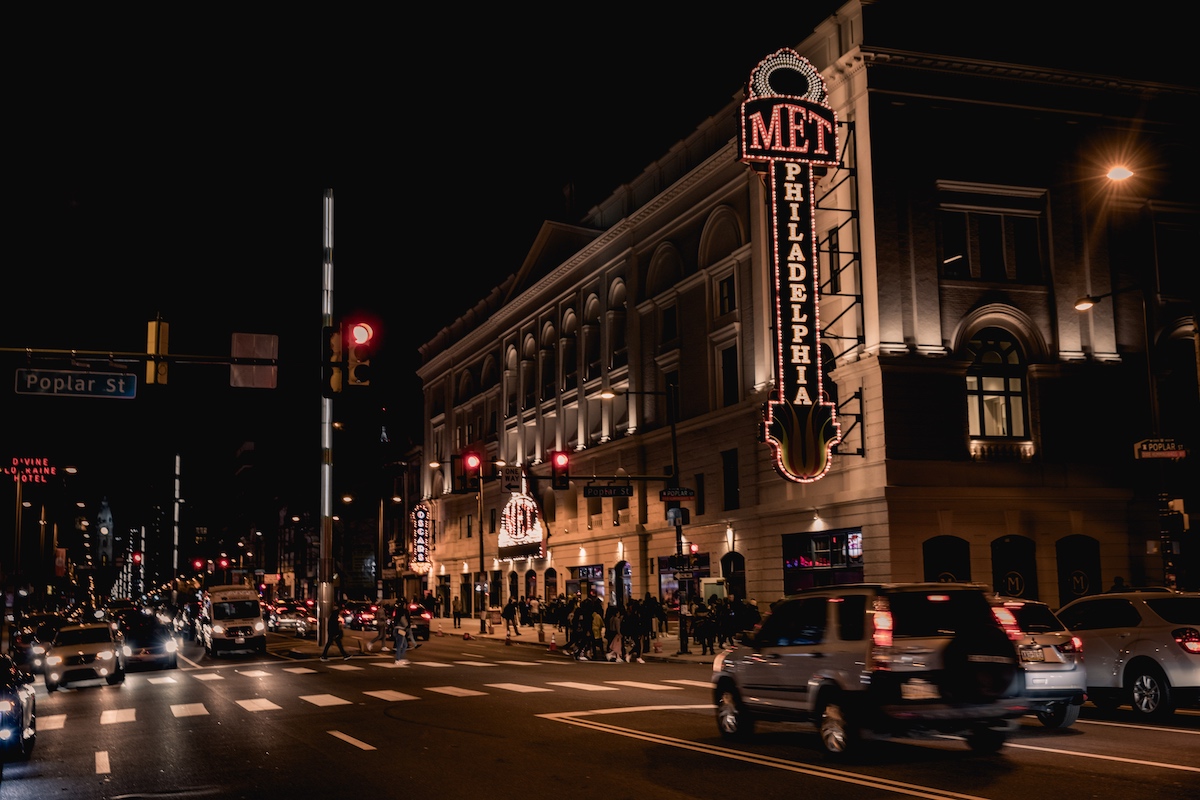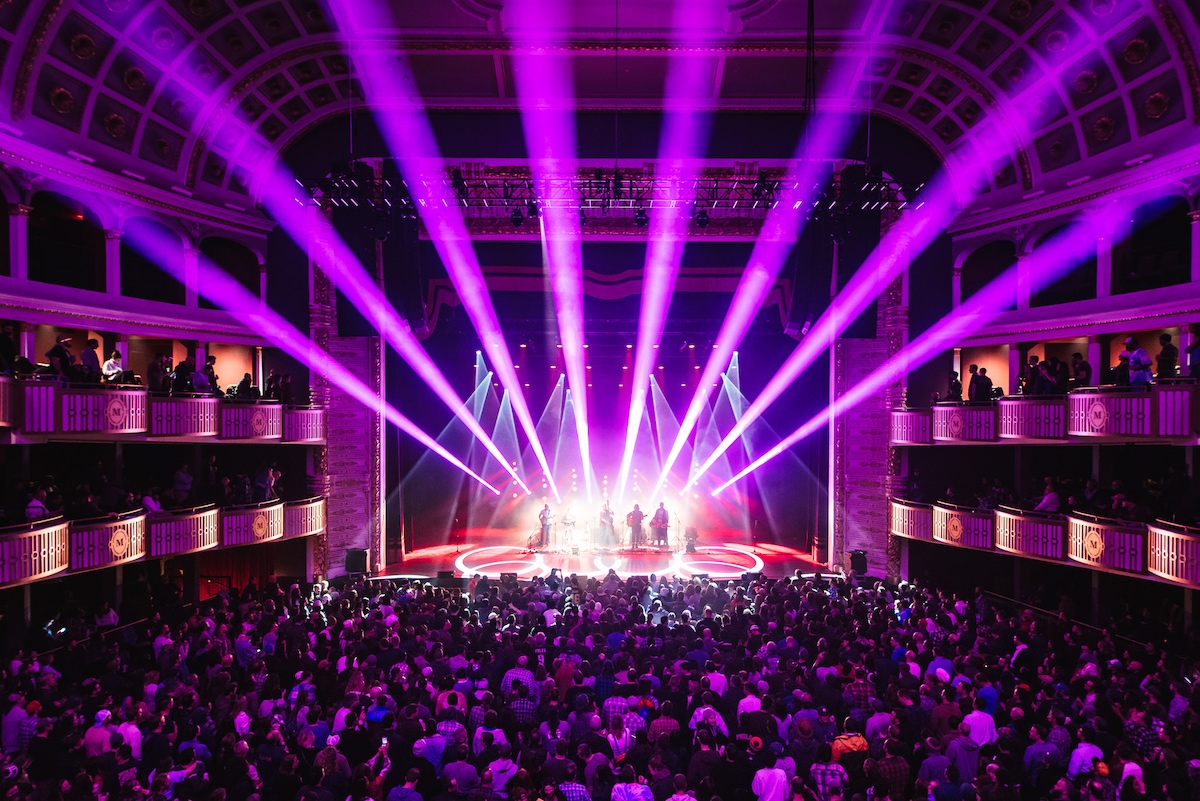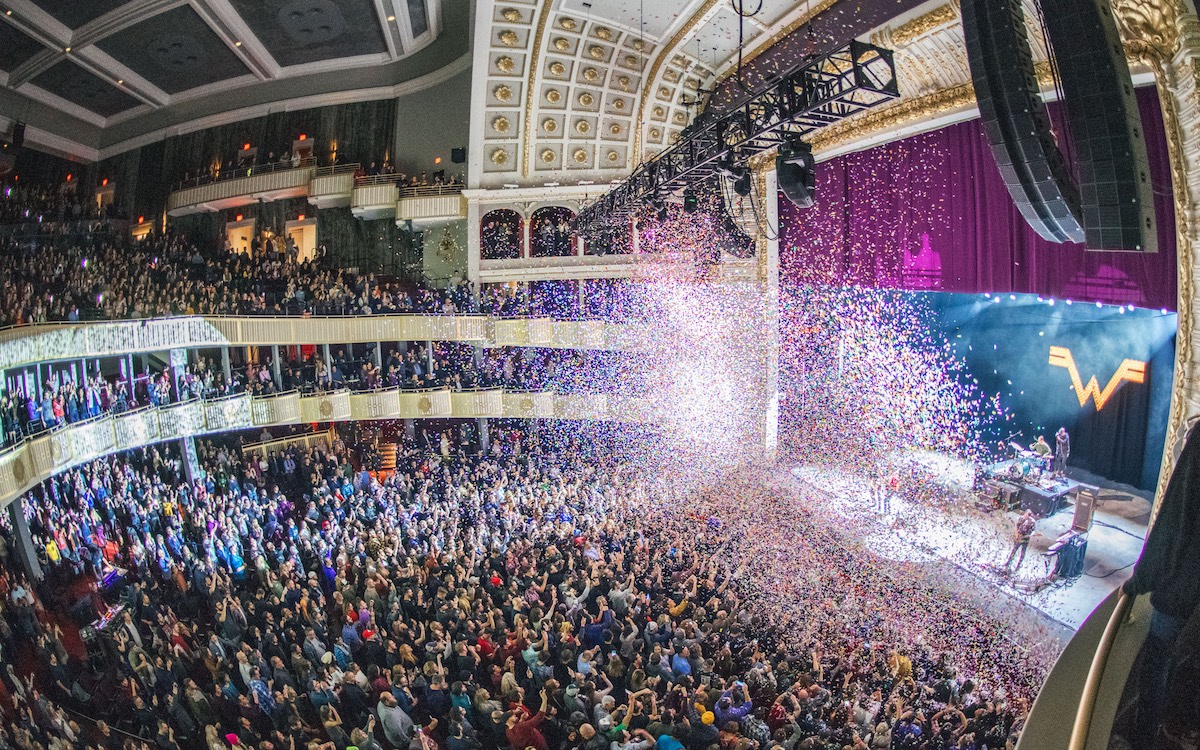In April, Jay-Z sold out the newly opened iteration of NYC East Village theater legend Webster Hall. Built in 1886, the Hall is the recently remade, hi-tech toast of Manhattan’s live music scene. Ready for action post-HOV, the venue will feature fresh shows from Rosalía, MGMT, Big Thief and more.
Back home, Philadelphia is having its own old theater renaissance. The Uptown Theater, the one-time home of soul and gospel on North Broad Street, is currently being renovated as a new stage space for young talent by the Uptown Entertainment and Development Corporation, with grant aid from the state of Pennsylvania and Gov. Tom Wolf’s Redevelopment Capital initiative. The Trocadero on Arch Street in Chinatown, opened as a burlesque hall in 1870 and set to close at the end of May or June, must surely have buyers at the ready with rejuvenation in mind.
popMostly, though, the very picture of the old theater remake/remodel, ripe and ready for versatile action, is Live Nation’s The Met Philadelphia, Oscar Hammerstein I’s marvel constructed in 1908 at Broad and Poplar streets and built for opera performances.
In its newest version, the new, fully amendable and versatile Met must be ready for everything from theatrical stage shows (Tyler Perry’s “Madea’s Farewell Play Tour”), boxing matches, run-of-the-mill rock, rap and jazz concerts, and political readings (Bill and Hillary Clinton).
And that’s just during the week: By Sunday morning, The Met must be ready for church services with the venue’s co-owner, Rev. Mark Hatcher and his congregation of the Holy Ghost.
“By the time Live Nation became part of the team, everything that had once been used for performance lighting and audio had long been removed,” said Malcolm Condie, production manager for Live Nation. “The original fly system had been scrapped and the only parts that remained were the T-bar guide rails and loft blocks, which weighed tons.”

(Photo by Christopher Hoffman)
The start of Met developer/co-owner Eric Blumenfeld’s renovation process (before and after taking on Live Nation as its presenting partner) began with tearing out yards of fly rigging and old light systems. They were then replaced with a state-of-the-art product that would respect and reflect the theater’s vintage vibe while bringing to light proof that The Met is ready to glow at all hours of the day.
“Knowing we were restoring a once-thriving performance hall that had been neglected for years, it was important to make sure that we kept as much of the feel, look and integrity of the room from 1908, but also create a new dynamic experience for audience and performer,” said Live Nation Regional President Geoff Gordon.
Condie added that while lighting fixtures have changed throughout the centuries, the concept of theater lighting has not.
“The Met has four electrics—all on trusses and flown by chain hoists—installed by Nashville’s Bandit Lighting, and including an upstage, a mid-stage, a downstage and a front truss,” he said. “In fact, the only conventional lighting we have are [Lekolites, a brand of ellipsoidal reflector spotlight] on the front truss.”
Other lighting fixtures are moving. Sound? The room’s already-superior acoustics are enhanced by an elaborate Clair Brothers sound system that offers pleasing, echo-free, well-balanced sound from all quarters of the building, enhanced with under-stage subwoofers.
Most concert spaces and theater spaces exist in separate worlds. Accordingly, systems were put in place to be able to go from staged theatrical pieces to boxing matches to church events.
“Due to The Met’s performance area design, we can be incredibly accommodating and flexible,” noted Condie. “At 94 feet wide, 65 feet deep, immense wing space and a grid 80 feet above the stage, we have the ability to fit small arena shows into a theater-size venue.”

(Photo by Christopher Hoffman)
Truly testing the mettle of The Met, however, is GRiZ, the Michigan-born, festival-only electronic music funk aficionado and saxophonist, who will shrink his usual outdoor-staged, megawatt production to accommodate the North Broad venue’s confines on May 11. Known for fusing a hot-wired, funk-driven sax sound with something coolly electronic was both oddly unique and brilliantly simple.
[“I’ll always do] what’s going to be really fun to play live, and I enjoy it as much as I can while I’m doing it,” GRiZ said. “That sound is a mashup of all the things I enjoyed as a kid and still do today. Funky, hip-hop, electronic, up-tempo, dance forward, huge vocals, party vibes, soul driven. All of that.”
GRiZ’s brand new artist-album debut, “Ride Waves,” morphs and mutates that sound with its sense of orchestrated dynamism and lustrous melody. “‘Ride Waves’ was about putting all of that into a blender and seeing what comes out the other side, doing things differently than I’ve done them before,” he added.
What has never come before for GRiZ, however, is taking his sound and staging — typically a grand festival vibe — to more intimate settings like The Met.
Mostly, GRiZ hopes to “show people a super dope show, something that feels massive, captures the imagination, and gives you space to freak out, dance, sing and let loose,” but in smaller, bite-sized doses, and without losing the bigness of a festival environment.
“I feel like it’s all about bringing the big performance energy to the stage,” GRiZ said. “But it’s really up to me. There is something so instantly infectious floating through the air at these shows that you can almost touch it. It’s magical. It follows us no matter where we play.”
If any theater could contain such zealous enthusiasm, it’s The Met.
The Met: By the numbers
- 1908 — When The Met opened its doors, originally as an opera hall created by Oscar Hammerstein I; one of several opera-specific venues the New Yorker would erect and construct over a lifetime
- 65’ — The depth of the stage from the top of the balcony
- 80’ — The amount of ceiling height above the stage floor
- 94’ —The width of The Met’s performance area
- 3,500 — Total crowd capacity at The Met
- 100,000 — The size in total square feet of The Met Philadelphia building when it reopened in December 2018, with legendary folk singer Bob Dylan as the headliner
Join the conversation!
Find news, events, jobs and people who share your interests on Technical.ly's open community Slack

Philly daily roundup: East Market coworking; Temple's $2.5M engineering donation; WITS spring summit

Philly daily roundup: Jason Bannon leaves Ben Franklin; $26M for narcolepsy treatment; Philly Tech Calendar turns one

Philly daily roundup: Closed hospital into tech hub; Pew State of the City; PHL Open for Business

